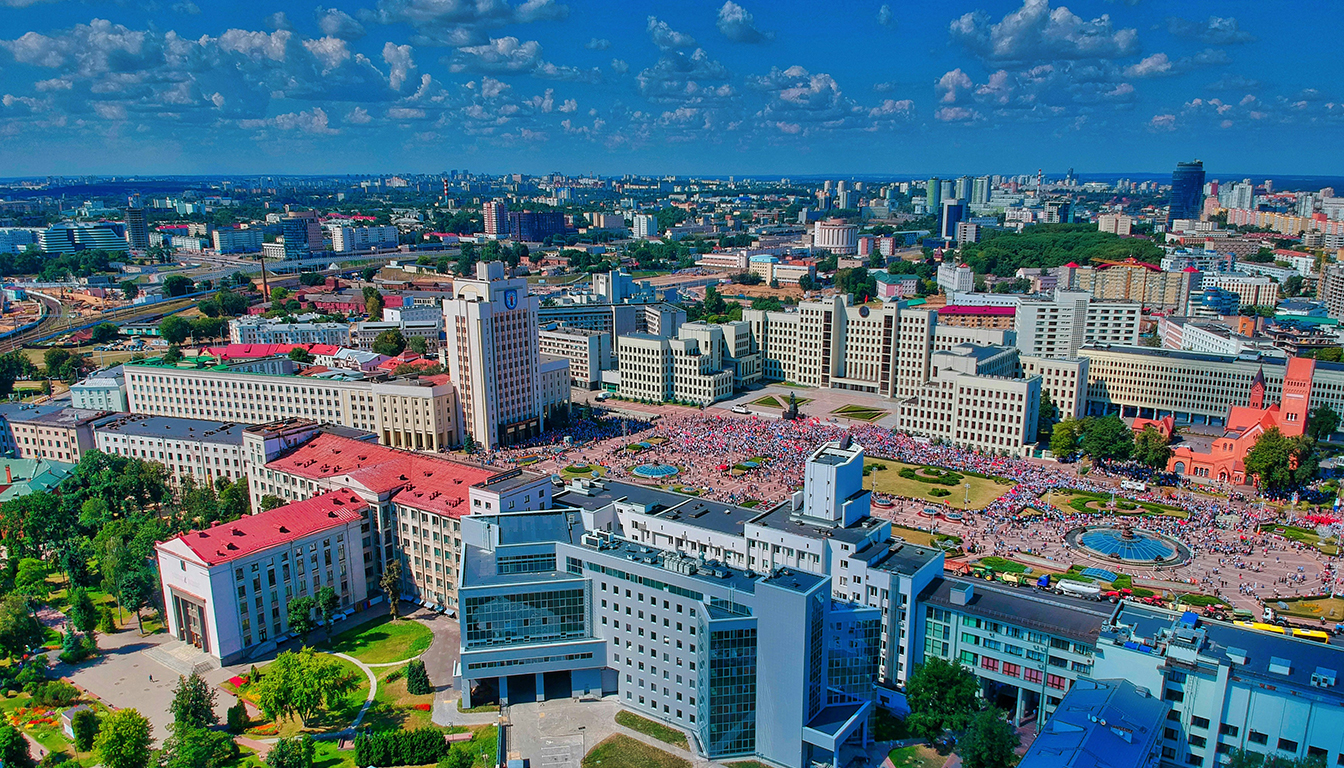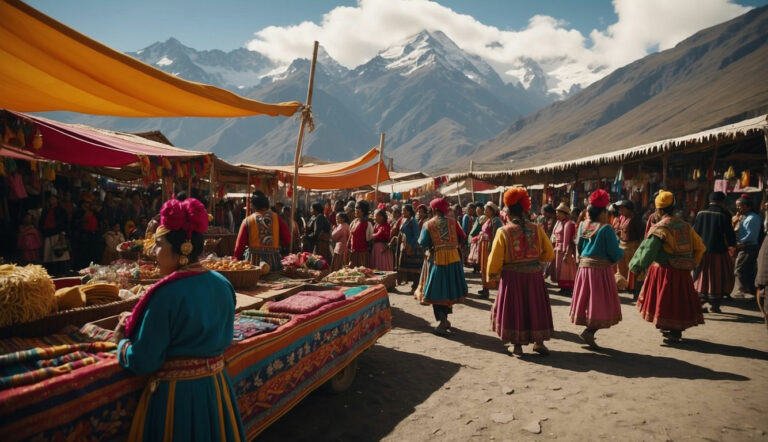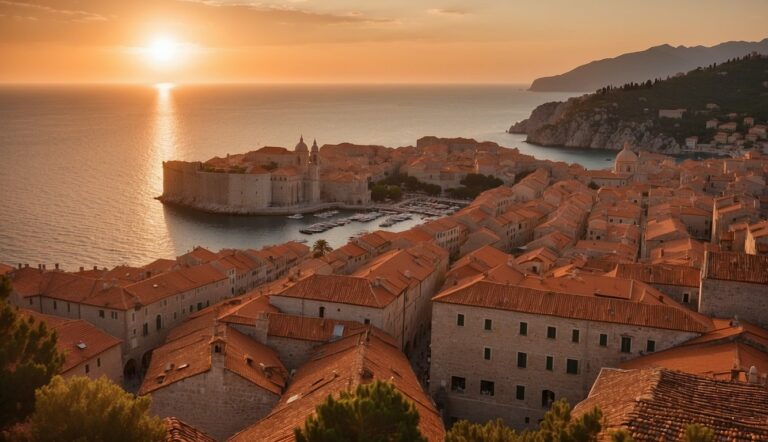Unveiling the Magic of Christmas in Belarus
Christmas in Belarus is a festive season that bridges the gap between old traditions and modern celebrations, reflecting the country’s diverse religious landscape and historical influences. While Christmas was once suppressed during the Soviet era, it has seen a resurgence in popularity. Now, many Belarusians observe the holiday with a blend of religious reverence and cultural festivities.
The celebration of Christmas in Belarus varies depending on religious affiliation, with Catholics and Protestants marking the occasion on December 25th and the Orthodox Church observing it on January 7th which is a public holiday. This duality showcases the Belarusian respect for both Western and Eastern Christian traditions. Throughout the festive period, Belarusian customs come to life, intertwining Christian practices with remnants of ancient pagan rituals that have been preserved over the centuries.
New Year’s Eve also plays a significant role in the winter holiday season, often overshadowing Christmas Day in terms of grandeur and public revelry due to historical precedence. Nonetheless, for those who celebrate Christmas, it is a time for attending church services, gathering with family, and participating in traditional events that underscore Belarus’s rich cultural heritage.
Christmas Traditions in Belarus
In Belarus, Christmas is a fusion of religious significance and deep-rooted folk traditions that have been influenced by various historical periods. Despite the overshadowing popularity of New Year’s Eve, Christmas customs remain an essential part of the winter holiday season.
Kaliady: Belarusian Christmas
Kaliady refers to the festive period beginning on December 25th for Catholics and Protestants and culminating on January 7th for the Orthodox believers, who follow the Julian calendar. During this time, households across Belarus observe traditional customs that blend pre-Christian pagan rituals with Christian beliefs.
Sviata Vecheria: Christmas Eve Dinner
The Sviata Vecheria or ‘Holy Supper’ is central to Christmas Eve traditions. This solemn family dinner typically includes 12 meatless dishes representing the twelve apostles. Key components often consist of dishes like kutia, a sweet grain pudding, symbolizing hope and immortality, and ushanka, a type of mushroom soup.
Caroling and Folk Customs
Caroling in Belarus is a time-honored tradition where groups of people, often dressed in costumes, visit homes singing kaliadki—carols specific to the Christmas season. These carols are sometimes interwoven with performances of miniature plays with historical or religious themes. Carolers are traditionally rewarded with treats for their performances.
Historical Development of Christmas Celebrations
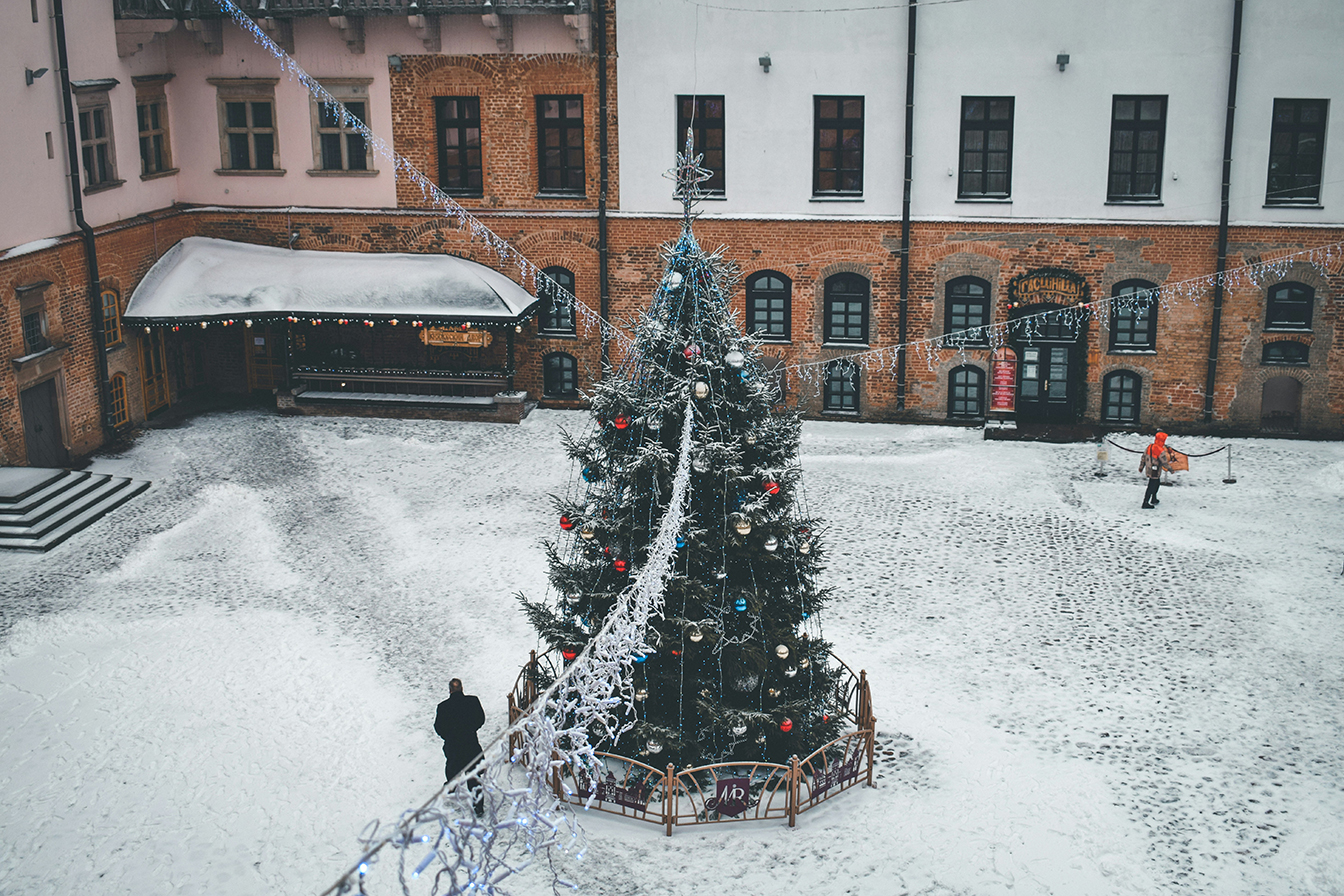
The evolution of Christmas celebrations in Belarus stems from ancient practices, molded over centuries by religious changes and political directives, culminating in a modern blend of solemn tradition and festive culture.
Pagan Roots and Christianization
Belarusian Christmas traditions trace their origins to both pagan customs and the advent of Christianity. Slavic paganism often included winter solstice festivities, which were gradually intertwined with the Christian celebration of Christmas following the Christianization of Kievan Rus’ in the 10th century.
Soviet Era and Religious Suppression
During the Soviet period, religious practices, including Christmas, faced suppression as the state promoted atheism. Celebrating Christmas in the traditional sense was discouraged, and many Christmas customs were rebranded or assimilated into secular New Year celebrations, with the shift placing emphasis on New Year’s Eve as the primary winter holiday.
Revival of Christmas Traditions Post-Soviet Union
After the collapse of the Soviet Union, there was a revival of Christmas customs in Belarus. The nation saw a resurgence of interest in religious and traditional practices, leading to increased observance of Christmas on both December 25th for Catholics and Protestants, and the Orthodox Christmas on January 7th.
Religious Observances
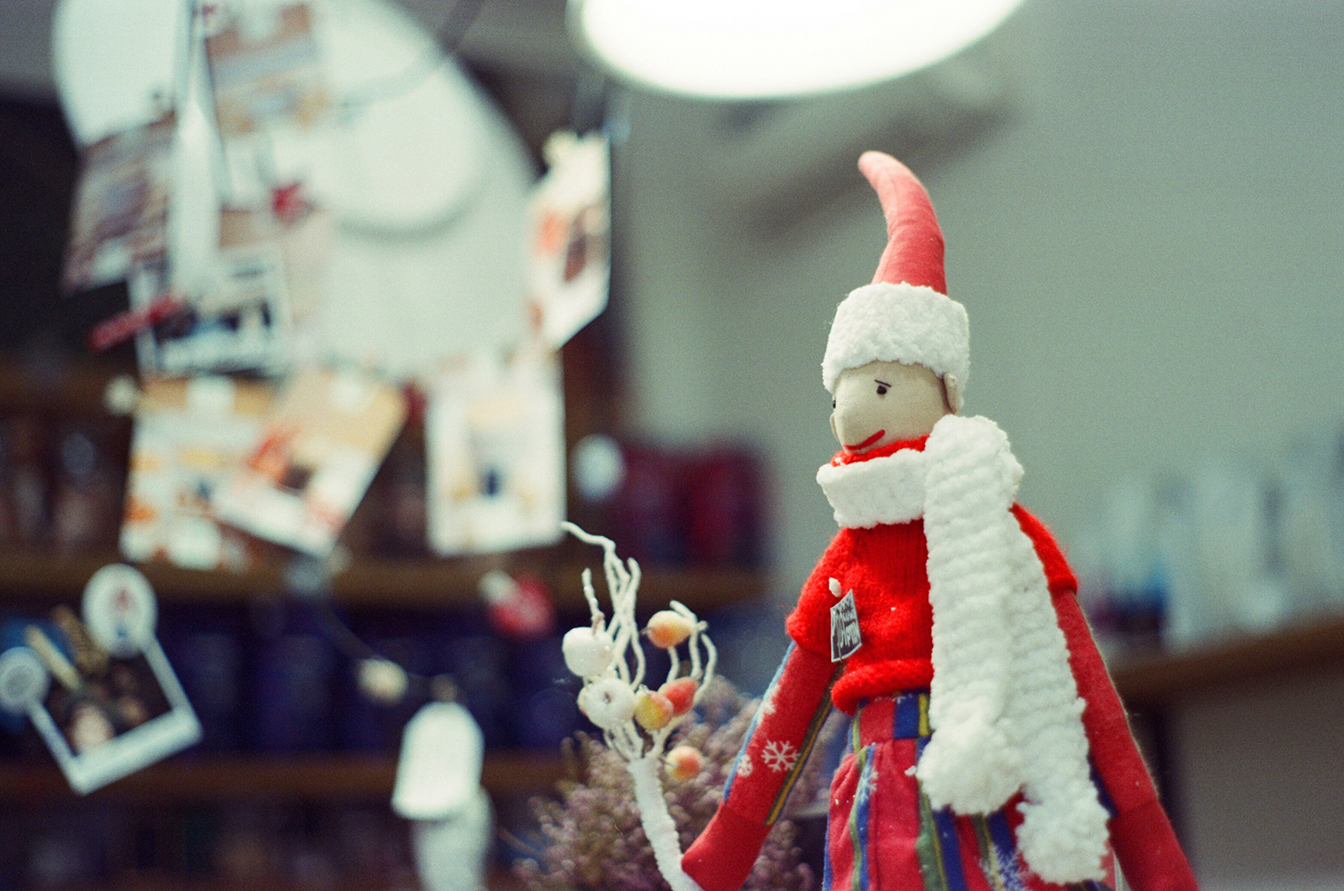
In Belarus, Christmas religious practices reflect the country’s mix of Eastern Orthodox and Roman Catholic traditions, with services and masses marking the solemnity and celebration of the season.
Orthodox Christmas Services
Orthodox Christians in Belarus observe Christmas on January 7th, according to the Julian calendar. TheDivine Liturgy of the Nativity is the centerpiece of the Orthodox Christmas services. It is traditionally a time for deep reflection, communal worship, and the reaffirmation of faith. The liturgy includes scripture readings, choral music, and the act of Holy Communion. Across Belarus, churches are attended by the faithful who participate in these rich and elaborate services.
Catholic Christmas Mass
Catholic believers in the country celebrate Christmas on December 25th, following the Gregorian calendar. The Christmas Mass is laden with hymns, prayers, and a sermon that reflects on the birth of Jesus Christ. Families typically attend the Midnight Mass, or “Pasterka,” which is a festive and solemn occasion marked by the communal sharing of the faith experience. Major churches in urban centers and smaller chapels in rural areas alike become centers of celebration.
Interfaith Celebrations
While the majority of religious Christmas celebrations in Belarus are either Orthodox or Catholic, there is a spirit of interfaith understanding during the festive season. Some families and communities partake in Christmas traditions that are non-denominational, embracing the season’s message of peace and goodwill. These interfaith celebrations often feature shared meals, exchange of gifts, and communal gatherings that resonate with the universal aspects of the Christmas holiday.
Public Celebrations and Festivities
Belarus boasts a mix of traditional and modern public celebrations during the Christmas season. The festivities are especially vibrant in the capital city of Minsk, various regional centers, and are accompanied by a notable increase in themed merchandise.
Minsk Christmas Festivities
In Minsk, the capital of Belarus, Christmas festivities include the Christmas Star festival, which features concerts and performances. The city’s main square typically hosts a large, ornate Christmas tree and a variety of themed activities. Minsk draws crowds with live music, holiday fairs, and light displays, further enhancing the city’s festive atmosphere.
Regional Events
Across the regions of Belarus, towns celebrate with their own unique events and customs. Some of these traditions have pagan origins, intertwined with Christian symbols, and include folk music, dances, and the performance of ancient rituals. Regional theaters and cultural centers might stage special Christmas-themed performances.
New Year and Christmas Merchandising
During the celebration period, Christmas markets pop up across major cities and towns, selling traditional Belarusian goods. Popular items include handmade crafts, ornaments, and local delicacies. Shops and department stores also offer a wide range of New Year and Christmas merchandise, including decorations reflecting both Soviet-era and Western influences.
Food and Feasting
In Belarus, Christmas is a time for sumptuous feasts where traditional dishes take center stage, each with its own significance and rich history. Cultural heritage is preserved through festive baking and contemporary interpretations of classic cuisine.
Traditional Christmas Dishes
Kutia is a quintessential Christmas Eve porridge made with essential ingredients such as oatmeal, honey, and seeds. This dish represents prosperity and is a staple during the holiday season. Another beloved dish is the Olivier salad, consisting of a hearty mix that typically includes potatoes, eggs, green peas, pickles, mayonnaise, and ham.
- Kutia: Oatmeal, honey, seeds
- Olivier salad: Potatoes, eggs, green peas, pickles, mayonnaise, ham
Notably, tinned peas are a common ingredient, finding their way into numerous traditional dishes. On many Belarusian Christmas tables, one would also find Shuba, a layered salad with diced pickled herring, grated vegetables, chopped onions, and mayonnaise.
Festive Baking
Belarusians cherish their festive baking traditions during Christmas. A variety of baked goods such as pirozhki (small stuffed buns) and bliny (thin pancakes) are prepared. These baked treats are often filled with meat, fruits, or cheese, offering a warm and comforting experience.
- Pirozhki: Stuffed buns with fillings such as meat, fruits, or cheese
- Bliny: Thin pancakes, sometimes served with sweet or savory fillings
Gift-Giving and St. Nicholas Day
In Belarus, St. Nicholas Day intersects with modern gift-giving practices, forming a unique blend of tradition and contemporary holiday customs.
St. Nicholas Day Customs
St. Nicholas Day in Belarus is predominantly a religious occasion. It does not typically involve the exchange of gifts that one might see in other countries’ celebrations of the day. The focus is on the religious significance of St. Nicholas as a figure who represents benevolence and generosity.
Modern Gift-Giving Practices
With the fall of the Soviet Union and the revival of cultural traditions, Belarus has seen a resurgence in festive gift-giving. Most gifts are now exchanged on New Year’s Eve rather than St. Nicholas Day. Ded Moroz, or “Grandfather Frost,” is the traditional Slavic winter figure who plays a similar role to Santa Claus and is associated with bringing gifts to children during these New Year celebrations.

